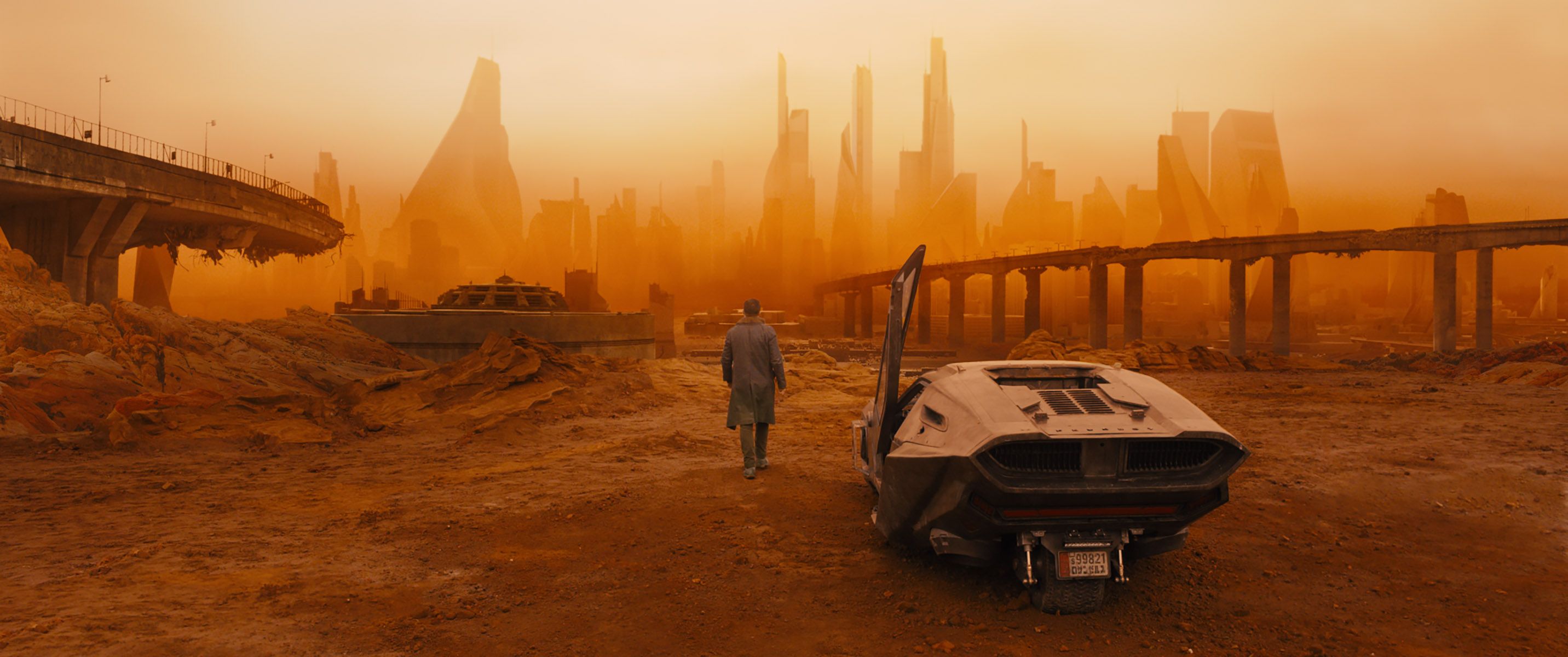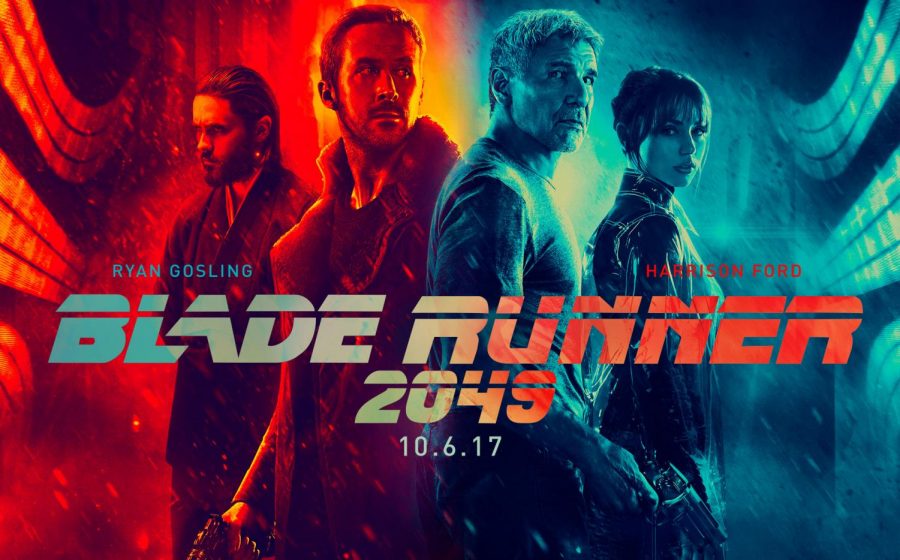Blade Runner 2049 Review: A Rebirth of Intelligent Sci-fi
The average moviegoer doesn’t go to the theater because they want to watch a movie. Most of the time, he or she will see an advertisement for a film, then later go out with a friend to see it in order to fill a void in their entertainment. At the time, it may seem mentally stimulating. When the movie ends, attendants will have general discussions on their opinion on the picture and sound that just bombarded them for ninety minutes. They’ll state basic, surface level comments about what they like and didn’t like and possibly even give the movie a numerical score or number of stars. But within a week, most of the attendants will forget almost everything about the movie other than the plot and sequence of events. None of the underlying messages and themes (if there even was any) will be retained or reflected on.
At its core, movies are products. Their main purpose is to generate revenue and the vision of the filmmaker is usually distorted in order to appeal to a wider audience. The film industry has become parallel with the pharmaceutical industry. Films, like medicine, are purchased in order to cure ailments. With films, the ailment is boredom or a lapse in amusement. When the ailment is cured, the prescription and necessity of the medicine ends along with its effect on you. Today, most movies are akin to consumer grade pain relief such as Advil or Tylenol. After serving their intended purpose, their effects along, with their necessity, fades within a matter of days.
“Blade Runner 2049” on the other hand, is unprescribed Percocet.
The original Blade Runner, released in the summer of 1982, is widely considered to be genre defining. The film takes place in 2019 Los Angeles and follows Deckard: a hunter of artificial humans known as replicants who are deemed illegal in society. With this basic synopsis, it might sound like a typical sci-fi premise compared to today’s movies. But it was the first of it’s kind at the time and set a standard for the genre.
“Blade Runner” isn’t influenced, it IS the influence.
The effects that director Ridley Scott and his team accomplished still influences sci-fi films today. When most people imagine what a dystopian technologically advanced future, It most likely resembles 2019 Los Angeles. The humongous condensed city spattered with bright neon hologram advertisements are now hallmarks in any movie sharing the same setting and concept.
“Blade Runner” also marked the start of more intelligent sci-fi. Apart from a few exceptions, the majority of popular films in the genre at the time valued spectacle over substance. Flaunting impressive effects while lacking true emotional weight and deeper meaning. “Blade Runner” managed to juggle both nearly effortlessly. The film tackled deep, thought-provoking ideas. Through its story, it was able to discuss how to deal
with increasing technological advances, the moral dilemma of artificial intelligence, and the poignant examination of humanity with what it means to be human.

This paved the way for films such as “District 9”, “The Fly”, “Dune”, and “RoboCop” to infuse more meaning into their films along with their visuals.
With accolades like these, It’s obvious that fans were skeptical of a reboot based on the track record of modern remakes that insulted the source material with their incompetence and sacrificed what made the original interesting. However, there were notable differences between “2049” and other recent remakes due to the production.
Attached to direct to was Denis Villeneuve: The director of multiple critically acclaimed films such as “Arrival,” “Sicario,” and “Prisoners.” He has become widely considered one of the new “greats” and able to be spoken in the same breath as Steven Spielberg and Martin Scorsese. Also attached as executive producer was Ridley Scott, which showed that the project was in good hands and understood the vision and importance of the original.
The most notable sign of good intentions from the creators was the inclusion of Harrison Ford, who is known for choosing his films carefully and distancing himself from franchises he no longer respects. One example is when he requested that his character Han Solo be killed off for more emotional weight in Return of the Jedi but was denied by George Lucas based on merchandising reasons. Ford Stated in an infamous ABC interview that “George didn’t think there was any future in dead Han toys.” His idea of the character along with possible resentment mostly likely lead to Solo’s death in The Force Awakens.
Even with its star-studded team, it was still impossible to tell before the release if the sequel would be able to be on par with the original.
But with its theatrical debut on October 7th, not only did 2049 achieve the same level of quality as the original, it also exceeded it to become an unprecedented fusion of high budget (attempted) blockbuster and artistic masterpiece.
The sequel is set thirty years after the events of the first film. Replicants have been integrated into society but must take servant and slave jobs. Those that defy and go rogue are then hunted down by people such as our main character K (played by Ryan Gosling), an officer who holds the same job as Deckard did thirty years prior. The film follows K and his quest to uncover a conspiracy involving the possible birth of a child from a replicant, which was thought to be scientifically impossible.
Arguably, the defining aspect of a blade runner film is its visuals. The original Blade Runner and its effects are undoubtedly spectacular. However, the technology at the time was limited compared to what’s available today. 2049 takes full advantage of today’s technological capabilities and, in turn, has become one of the most visually stunning films to date.

The city has evolved into a blanket of concrete that covers nearly all of the west coast. Neon advertisements have moved into the third dimension. Mobile projections of brand mascots dance among the people on the streets like ballerinas. Looming holographic colossi march past the skyscrapers and even kneel down to interact with single civilians in an attempt to peddle their product. All the while no one bats an eye. You get a clear sense of daily life in this Florescent ecosystem and how technology has become unnaturally infused with society. Alluding to the themes of the film.
The visuals are undoubtedly flashy, but they are also meticulously poignant. Cinematographer Roger Deakins drapes almost every scene in a singular color with either a character or a key object in contrast to it, subtly drawing the viewer’s attention. Sometimes the character
But what makes the film truly special is its ability to be more than just eye candy, becoming a tour de force of cinema.
Like it’s predecessor, “2049” discusses themes of humanity, technology, and it’s blend. The difference is that those themes are now expanded upon, providing us with an entirely new perspective but set in the same scenario. In the original Blade Runner, the primary concept was how technology was reaching a threshold that would be considered immoral or even unholy. With “2049” the threshold has been reached and the questions now are how do we deal with it and do we need to deal with it?
A replicant is unidentifiable to the naked eye. It looks and acts exactly the way a human does. The only difference being their artificial skin and organs. Even memories are artificially created in order to make a replicant believe that and act like a human until told otherwise. Because of their near flawless design, characters once thought to be human are later revealed to be synthetic and even vice versa. When there’s almost nothing making a human and a replicant distinct from each other, what makes a human a human? Is it a beating heart? Is it empathy? Is it the capacity to choose? Artificial Intelligence has already achieved major milestones with programs such as Siri and Alexa are able to interpret and obey our command. Their capabilities are only going to develop from their current state along with corporations, urban landscapes, and general ease of autonomous consumerism production. We are quickly approaching the threshold and “2049” is a possible glimpse into our future.
“Blade Runner 2049” took six years and 185 million dollars to bring to life but unfortunately did not generate much revenue in the box office, even though it’s marketing contained everything that makes a profitable franchise. Stunning visuals, A-list actors, and brand recognition usually make audiences flock to the theatre. The problem lied with the advertising being horribly incorrect.
Despite its cult status, most aren’t very familiar with the original Blade Runner, remembering it only as another sci-fi movie starring Harrison Ford that came out in the 80s. Therefore, because it falls into the genre, people go to the theater expecting this intense action movie with chase scenes and explosions. What they got was a slow building film with moments of interpretation and a need for further contemplation. The antithesis of a blockbuster. The last feeling the average moviegoer wants to feel after watching something is confused.
Based on published reviews detailing what to expect, as well as general word of mouth, the general population might have steered away from “2049” and instead chose more accessible movies such films with more honest marketing. At the time, “It” was still selling a record-breaking amount of tickets and the movie “happy death day,” a formulaic horror movie with an extensive budget for marketing, was released a week later and dethroned “2049’s” short period at peak position on the box office.
Still, the fact that “Blade Runner 2049” even exists is a miracle. No other film valuing artistic expression over wider audiences has had such a large budget. Denis Villeneuve and his team made their purest vision that doesn’t require correction. Villeneuve stated that this would be his only version of the film. The original Blade Runner is infamous for having multiple variations from the original due to the amount of studio meddling in the theatrical cut.
With luck, “Blade Runner 2049” will have the same effect as the original. Present or future filmmakers will acknowledge it’s feats and will strive to achieve the same level of quality with their own films, making them more than just a consumable product.
It will give people a real reason to go to the movies.

